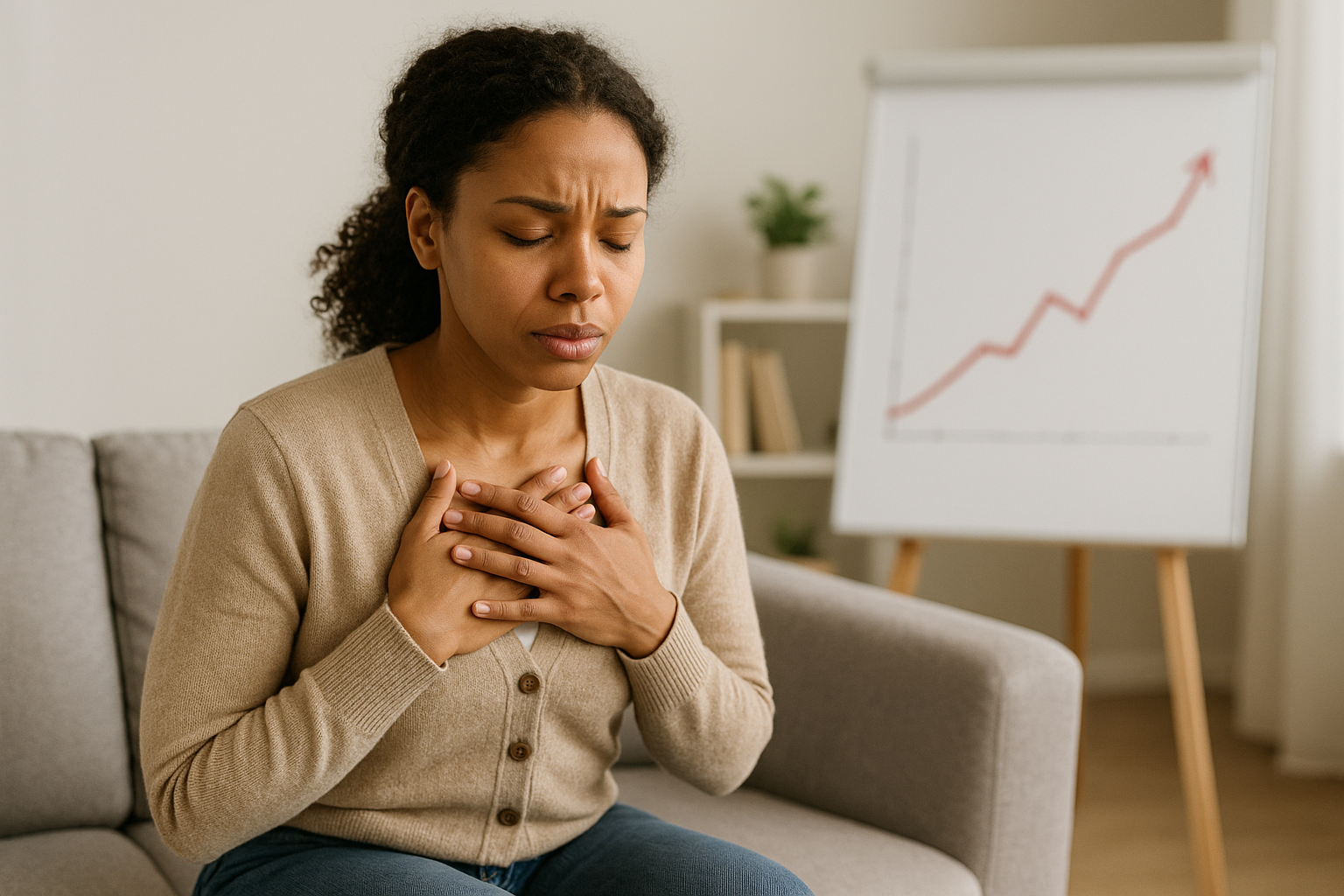In today’s fast-paced and digitally connected world, mental health challenges are more visible than ever. Many people, from students to working professionals, are grappling with anxiety and the sudden onset of panic attacks. These issues are no longer isolated experiences; instead, they reflect a trend seen both nationally and globally. As conversations around mental health become more open, the numbers are rising, making it crucial to explore why panic attacks seem to be on the rise in 2025, how they affect daily life, and what solutions are available.
Understanding the Rise in Panic Attacks
Modern life brings endless notifications, social pressures, and uncertainty about the future. These stressors contribute to an alarming increase in anxiety disorders and panic attacks. Recent research from 2025 displaying the studies identified by reference number 1752421219 indicates that panic attacks have become more frequent, especially among young adults and people living in urban areas.
These attacks often manifest with symptoms like a racing heart, shortness of breath, dizziness, and an overwhelming sense of fear. The reasons for the increase are multifaceted:
- Long working hours and work-from-home setups have blurred the boundaries between work and personal time.
- Social media can fuel comparison, fear of missing out, and cyberbullying.
- Economic pressures, job instability, and concerns about world events add daily stressors.
- Lack of real-life social support due to more isolated living arrangements.
These factors create a fertile ground for anxiety to grow, which makes experiencing a panic attack more common than ever before.
Recent Statistics: How Common Are Panic Attacks in 2025?
Data from new studies and health organizations in 2025 show a significant rise in the reported frequency of panic attacks. The figures are telling:
- Nearly 22% of adults report having experienced a panic attack in the past year—an increase from 16% just five years ago.
- One in four young adults (ages 18-24) reports regular panic attacks, making this the most vulnerable group.
- Panic attacks among working professionals have doubled in the past three years, likely linked to economic and occupational stress.
- Almost 30% of people seeking mental health support now list panic symptoms as their main concern.
These statistics show that panic attacks have become both a public health concern and a daily challenge for countless individuals.
The Everyday Impact: Real-Life Experiences
Panic attacks can affect anyone. Imagine a university student who starts sweating and feeling dizzy during an exam, or a manager who suddenly struggles to breathe in a meeting packed with deadlines. These scenarios illustrate how debilitating anxiety can become when it strikes suddenly.
People who suffer from panic attacks often change their routines to avoid potential triggers. For instance:
- A parent may avoid social gatherings, fearing being judged if an attack happens in public.
- A commuter might skip their usual train, choosing longer routes just to feel safer.
- Teens might turn away from sports or extracurricular activities to avoid stressful situations.
These modifications can shrink a person’s world, potentially leading to feelings of loneliness or even agoraphobia. The ripple effect touches relationships, career paths, and even physical health.
Solutions for Managing Panic Attacks: The Trankua Approach
When a panic attack happens, quick and reliable support makes the difference. At Trankua, we believe technology can provide both comfort and solutions wherever you are. The Trankua App serves as your personal calm companion, offering instant access to science-backed techniques that help manage symptoms in real time.
Key features of the Trankua App include:
- Guided breathing sessions that help slow your heart rate and restore calm in under five minutes.
- Real-time grounding exercises designed to center your thoughts and break the cycle of panic.
- Emergency support tools for redirecting anxiety and regaining composure at home, work, or on the go.
- Personal progress tracking so you can see how your coping skills improve over time.
- Customizable calming sounds tailored to your preferences, helping you soothe your mind quickly.
With these tools at your fingertips, you can face anxiety with confidence and reduce the impact of panic attacks on your daily life.
Building Resilience and Staying Connected
Overcoming anxiety and panic attacks often starts with building small daily habits and having the right support system. While no app or tool replaces professional mental health care, consistent use of wellness strategies can make a significant difference.
Practical ways to manage and reduce panic attacks include:
- Practicing mindfulness techniques to interrupt negative thought patterns.
- Developing a coping toolkit of exercises for moments of high stress.
- Reaching out to trusted friends or support groups to connect and share experiences.
- Using digital resources, like the Trankua App, for instant guidance whenever anxiety strikes.
- Setting healthy boundaries with media consumption and social media to protect your mental space.
By embracing these approaches, many people find not just relief from panic attacks but a sense of renewed confidence in everyday life.
If you or someone you know is struggling with panic attacks, remember that support is always available and help is only a tap away. Explore immediate support and calming solutions now by downloading the Trankua App.

